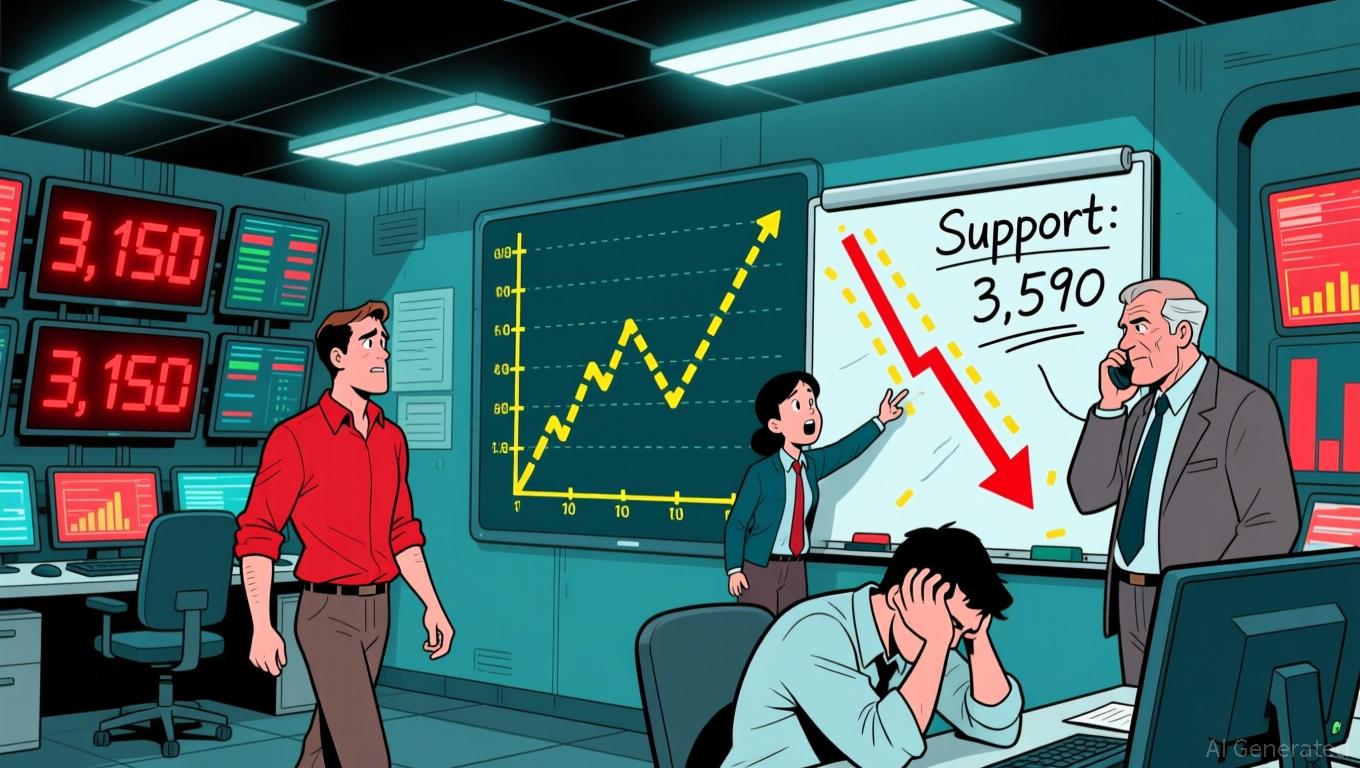Regulation and Innovation: The Struggle Over Crypto's Proof of Reserves Will Define Its Future
- Proof of Reserves (PoR) has become a trust cornerstone in crypto, with regulators and exchanges prioritizing transparency post-FTX collapse. - The 2025 "flash crash" and new CLARITY/GENIUS Acts reinforce PoR's role, mandating stablecoin reserves and monthly audits under federal oversight. - BNY's stablecoin fund and 21Shares' ETFs show crypto-traditional finance integration, while a16z warns overregulation risks stifling DeFi innovation. - Technological solutions like zk-STARKs enable private yet verifia
Proof of reserves (PoR) has become a fundamental tool for restoring confidence in the cryptocurrency sector, as both industry leaders and regulators increasingly call for openness in response to persistent market instability. In the aftermath of the FTX collapse three years ago—which revealed deep-seated vulnerabilities in unregulated crypto platforms—PoR initiatives have become essential for proving that user funds are entirely supported by actual reserves. Lennix Lai, OKX’s global chief commercial officer, maintains that the cryptographic audits and independent checks provided by PoR are vital for moving the industry past its lawless early days and establishing a culture of responsibility
The dramatic market drop in October 2025, which wiped out close to $20 billion in leveraged trades, highlighted the ongoing necessity for transparent practices. Although leading exchanges now use PoR to safeguard tens of billions in client assets, Lai observes that public interest in these transparency efforts tends to fluctuate.

The GENIUS Act, which passed the U.S. Senate with support from both parties, represents a significant milestone in formalizing the accountability of stablecoins. The law designates certain dollar-linked stablecoins as "payment stablecoins" and imposes requirements for reserves, anti-money laundering compliance, and transparency on their issuers
Nonetheless, obstacles remain. a16z crypto, the digital asset division of Andreessen Horowitz, has called on the U.S. Treasury to clarify that the GENIUS Act does not apply to decentralized stablecoins, which are governed by smart contracts rather than centralized entities
Lai stresses that transparency should be "continuous, verifiable, and embedded at the foundation" of crypto businesses, extending beyond PoR to address issues such as non-transparent exchange listing fees
Disclaimer: The content of this article solely reflects the author's opinion and does not represent the platform in any capacity. This article is not intended to serve as a reference for making investment decisions.
You may also like
TWT’s Updated Tokenomics Structure: Transforming DeFi Rewards and Influencing User Actions

Uniswap News Today: Uniswap's Tokenomics Revamp Ignites Discussion: Expansion Ahead or Liquidity Outflow?
- Uniswap launches Continuous Clearing Auctions (CCA) with Aztec Network to enhance token distribution transparency and liquidity via on-chain price discovery. - The UNIfication proposal redirects swap fees to burn UNI tokens, creating deflationary pressure and boosting value through 0.05%-25% fee allocations. - Market reacts positively with 40% UNI price surge, but critics warn of liquidity risks and competition from DEX rivals like Aerodrome. - Aztec's CCA-powered token sale tests the system, prioritizin
Bitcoin Updates: Saylor Remains Confident in Bitcoin, Driving Strategy's Aggressive Investment Despite Market Downturn
- Michael Saylor denies rumors of selling Strategy's 641,692 BTC ($22.5B) amid market selloff, reaffirming long-term accumulation strategy . - Bitcoin fell below $96,000 as MSTR dropped 35% YTD, but Saylor claims recent 487 BTC purchase shows accelerated buying. - Analysts call current BTC correction a "mid-cycle consolidation" phase, noting historical patterns from 2024-2025 market analysis. - Strategy's $20.29B unrealized gains and Saylor's "long-haul" stance highlight Bitcoin's perceived store-of-value

Ethereum News Update: Is the $3,150 Level Ethereum's Final Defense Against a Steeper Drop?
- Ethereum's price dropped 10% to $3,150, testing critical support as market participants assess rebound potential amid mixed institutional and retail demand. - A breakdown below $3,590 triggered accelerated selling, with 138% above-average volume indicating institutional participation in the selloff. - Broader crypto market declines saw Bitcoin fall to $97,000 and $260M in ETH ETF outflows, signaling waning institutional confidence. - Technical indicators show Ethereum failing the 200-day EMA and RSI in d
